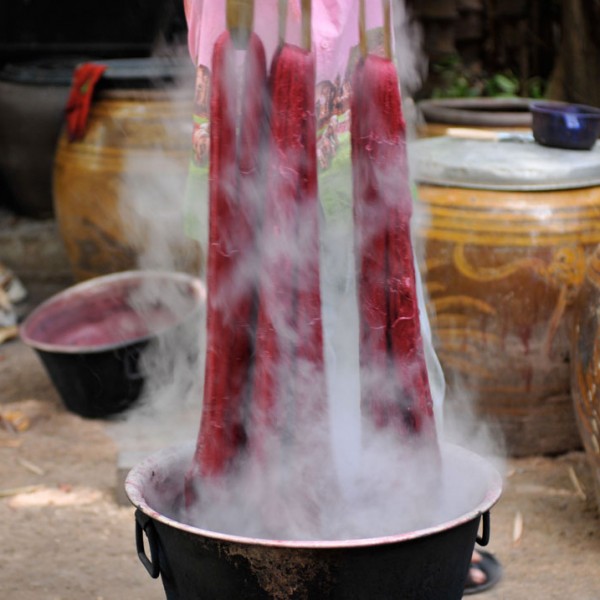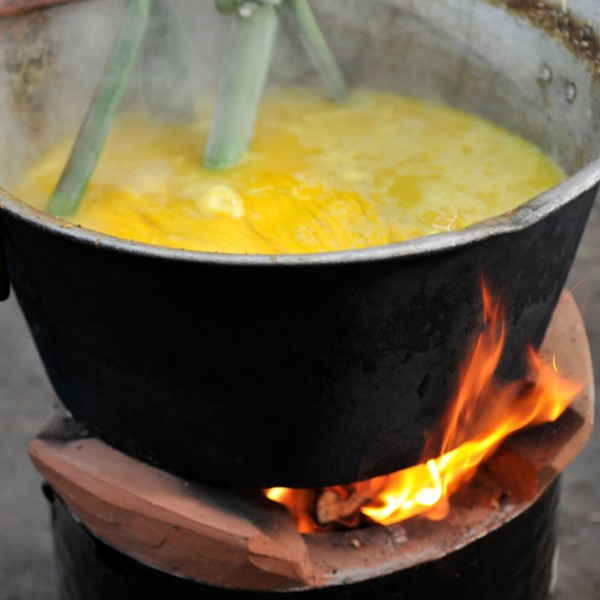In this textile workshop located near Surin in Southeastern Thailand, natural dyeing craftsmanship has been kept alive. The master dyer knows the color potential of each plant located in the surrounding countryside and which infinity of colors it can give.
The workshop mainly dyes silk hanks which will be used once tinted for precious brocades and royal weavings, in the purest Thai tradition.
For red, the artisan uses “khrang” in Thai (also called “lak” in Khmer). It is a resin excreted by a small insect, the Laccifer lacca, an Asian cochineal species. For the bright yellow, he uses gum extracted from an Asian shrub similar to the mangosteen tree called Garcinia dulcis, or from pomegranate berries decoctions. Finally, to get a blue of remarkable intensity, he uses indigo leaves (Indigofera tinctoria) put to ferment in jars for ten days and which remainder is then turned into powder. Other plants also offer a variety of colors such as Oroxylum indicum barks (“key” in Thai), an Asian tree giving ochre to khaki color, or coconut barks giving a pinkish brown.
Silk yarns are first laundered in a banana leaves washing water and then immersed in herbal decoctions baths brought to boiling for the red and yellow colors. Associated with natural mordant which fixates the color, pigments then penetrate the fiber and give them hues of impressive and sustained intensity. The indigo dyeing process is different, requiring no use of mordant and working on cold water.
Surin is an area very close to Cambodia, therefore the surrounding nature appears to be similar from one side of the border to the other. It is then no surprise to notice the same color tones of yellow, red and blue in respectively each weaving productions.











